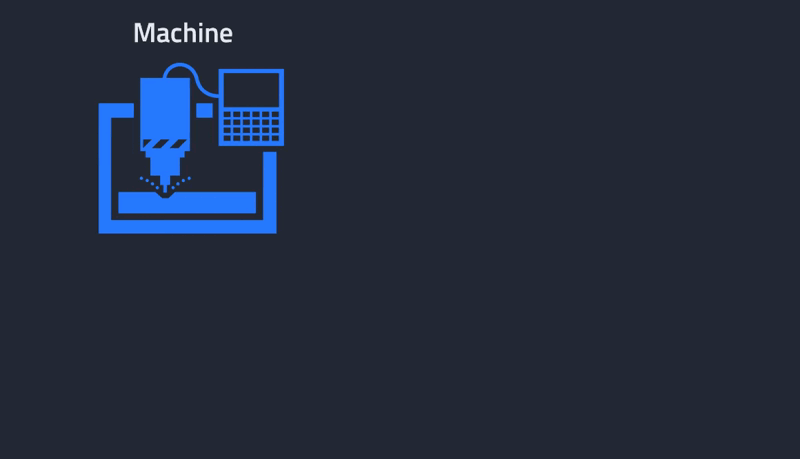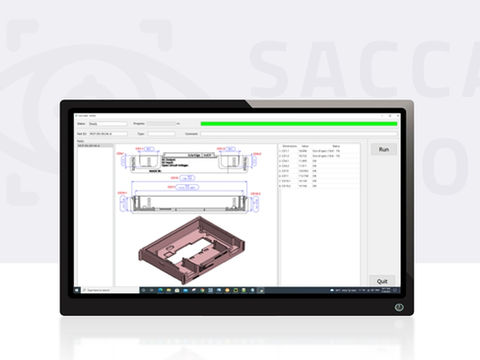SOLUTION
HOW THINGS ARE DONE TODAY AND HOW SACCADE WILL MAKE IT DIFFERENTLY
PROBLEM

PROBLEM #1
Machine setup is too long
New batch is started by manufacturing
a few samples. The machine is stopped, and samples are taken for offline inspection. It could be that they are great, but too often the machine setup needs to be adjusted. This process can take a few hours even up to 24 hours sometimes.
"
You spend so much time on setup, which kills you on short run applications.
PROBLEM #2
“Blind” manufacturing
Manufacturers don't really measure every single part. Quality control is costly and performed on a small sample size. Some faulty parts may be shipped to the
end customer.
The end customer performs incoming quality inspection, but it is very costly and
is done on a small quantity of samples.
This means some faulty parts may find their way to the production process.


DIRECT VS INDIRECT MEASUREMENTS
Today most of the automated smart decisions based on AI are made using indirect data. For example, an acoustic sensor provides a good estimation of machine vibrations, but not the direct measurement of the machine output.
This happens because direct measurements are slow and expensive and therefore are done with very limited sampling. Current optical measurements are not precise enough and require adaptation by highly trained engineers.
HOW THAT WORKS WITH SACCADE

SOLUTION
Machine-Integrated Inspection from Saccade Vision
The problem of machine setup time is solved: you don't need to take the parts out and send them offline inspection. The setup time is reduced significantly, improving overall equipment efficiency and utilization, and labor costs go down.
The challenge of faulty parts is also solved. Each time the system identifies a faulty part it will automatically sort it out. Parts that are shipped to customers are 100% tested and 100% inside spec
Value of zero-defect manufacturing with integrated inspection
Majority of end-customers require from supplier to demonstrate process capability index (Cpk) 1.67 (delivering 99.999% of good parts). If the supplier cannot prove that they need to do 100% of part inspection.
A supplier can solve this problem by ensuring additional margins on top of customer requirements. It requires more tight and expensive processing, and as a result the cost of the part goes up tremendously. If a supplier can measure 100% of parts and sort out every faulty part without spending additional time and labor, he may allow some process relaxation.
Manufacturing costs will drop and eventually this will reduce costs not just for the supplier, but also for his customer.


SOLUTION
Ultimate Predictive Analytics and Advanced Process Control
The next step is not just sorting out bad parts, but actively correct the manufacturing process and improve yield using integrated inspection.
An ultimate process control solution is based on a combination of data that comes from indirect measurements of process parameters and frequent, accurate direct measurements of output of the machine.
DATA ANALYSIS EXAMPLE
POSSIBLE ACTIONS

Parts manufactured with different tools


Same tool; Different manufacturing date


Identify trends per manufacturing tool
100% on-machine inspection is not just about sorting out bad parts. It provides insights on how to adjust process and machine parameters to bring the process deep into limits.

Predictive maintenance
Direct measurements of the machine output allow easier detection of potential machine health issues and minimize unscheduled downtime.

Correlation with other process parameters
For example, material feeding rate in milling machines can be correlated with on-machine dimensional measurements and adjusted in order to keep actual cutting force equal to optimal value.

Products binning
100% parts measurements allows matching parts with different dimensions for tighter assembly



